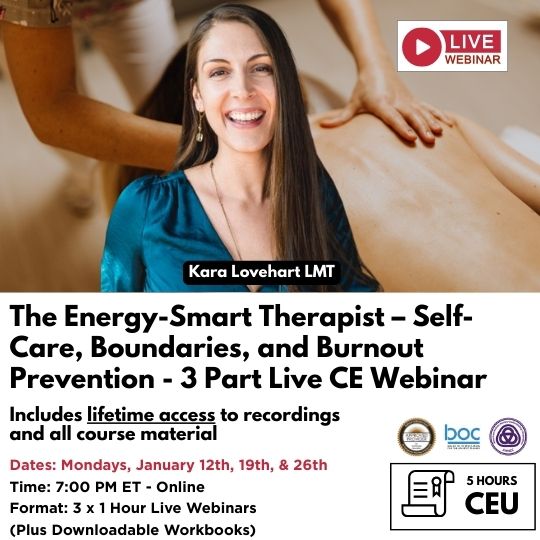Trigger Point Therapy - Rotator Cuff Disorders
Rotator Cuff Injuries Explained - Dr. Jonathan Kuttner
In 70% of all doctor and therapist visits for shoulder problems, the diagnosis is rotator cuff disorder
The shoulder is involved in almost all of our waking activities. It is extremely flexible, and along with its several sub-joints (all of which combine to give the widest range of motion in any joint in the body) this is also what makes it vulnerable to injury.
The innate joint concavity/convexity stability is weak so an intricate system of capsule, ligaments, connective tissues and muscles is employed to fix the large ball into the small socket.
The four cuff muscles concurrently bring the gleno-humeral joint back and down to stabilize the shoulder, allowing us to manipulate our environment with our hands.
These structures are prone to wear and tear, which tends to start in the 4th decade. This is directly influenced by mechanical and ergonomic factors.
In 70% of all doctor and therapist visits for shoulder problems, the diagnosis is rotator cuff disorder (Lewis 2014) but this is not the whole story.
Research Studies
Interestingly, several recent imaging studies have highlighted the frequency of shoulder problems in the ‘asymptomatic’ normal population. An ultrasound study conducted in 2011 focused on 51 men, aged between 40 and 70, who had no shoulder pain.
The results concluded that 96% of asymptomatic males may actually have some degree of moderate to severe shoulder pathology. The most common pathologies visualized issues were:
• Subacromial thickening - 78%• Acromio-clavicular joint degeneration - 65%
• Rotator cuff tendon pathology - 39%,
• Subscapularis tendon pathology - 25%,
• Partial thickness tear - 22%
• Cartilage pathology in the ball socket - 14%.
MRI studies also indicate that rotator cuff disorders are extremely common in the asymptomatic population.
One MRI study of 31 subjects in 1999 (Frost) concluded that the incidence of rotator cuff disease in the normal population is ‘common and increases with age’.
The study found that 72% of subjects over the age of 50 had a rotator cuff disorder, compared with 48% for 40-49 year olds and 43% for subjects between the ages of 30-39.
Yet another study in 1995 (Sher) scanned the dominant shoulder in 96 asymptomatic subjects and examined the rotator cuff.
The results concluded that 28% of asymptomatic subjects between the ages of 40-60 had a moderate to severe structural pathology of the rotator cuff tendon. Beyond the age of 60, the figure rose to 52%.
Trigger Point Therapy - Shoulder Pain
The fact is that anyone coming to us over the age of 50 is likely to have a moderate to severe shoulder pathology even if asymptomatic.
The big question here then is, what ‘switches on’ an asymptomatic shoulder? Is it the soft tissue ‘holding pattern’? There are many compelling arguments that trigger points may have a key role.
According to Dr. Robert Gerwin (John Hopkins School of Medicine) myofascial trigger points may be responsible for 75–95 percent of muscular (shoulder) pain.
Trigger points can develop in muscles for a number of reasons. When present they cause the host muscle to be shorter, tighter and less efficient.
Holding Patterns
Any change in shoulder mechanics over time can manifest as tight areas within muscles (trigger points) as our body always attempts to protect us, and trigger points may be a key component of our built-in ‘protect and defend’ mechanism.
So when it comes to shoulders, always remember the especial importance of looking at the shoulder in relation to the rest of the body, and look for the secondary or even tertiary trigger points that may well be at the root of the injury.
Secondly, try to figure out what the body is trying to do in terms of protection.
Ask your therapist about trigger points!
Find a Trigger Point Professional in your area
Dry Needling for Trigger Points
Certify as a Trigger Point Therapist
Recommended Starter Packs:
This trigger point therapy blog is intended to be used for information purposes only and is not intended to be used for medical diagnosis or treatment or to substitute for a medical diagnosis and/or treatment rendered or prescribed by a physician or competent healthcare professional. This information is designed as educational material, but should not be taken as a recommendation for treatment of any particular person or patient. Always consult your physician if you think you need treatment or if you feel unwell.
About Niel Asher Education
Niel Asher Education (NAT Global Campus) is a globally recognised provider of high-quality professional learning for hands-on health and movement practitioners. Through an extensive catalogue of expert-led online courses, NAT delivers continuing education for massage therapists, supporting both newly qualified and highly experienced professionals with practical, clinically relevant training designed for real-world practice.
Beyond massage therapy, Niel Asher Education offers comprehensive continuing education for physical therapists, continuing education for athletic trainers, continuing education for chiropractors, and continuing education for rehabilitation professionals working across a wide range of clinical, sports, and wellness environments. Courses span manual therapy, movement, rehabilitation, pain management, integrative therapies, and practitioner self-care, with content presented by respected educators and clinicians from around the world.
Known for its high production values and practitioner-focused approach, Niel Asher Education emphasises clarity, practical application, and professional integrity. Its online learning model allows practitioners to study at their own pace while earning recognised certificates and maintaining ongoing professional development requirements, making continuing education accessible regardless of location or schedule.
Through partnerships with leading educational platforms and organisations worldwide, Niel Asher Education continues to expand access to trusted, high-quality continuing education for massage therapists, continuing education for physical therapists, continuing education for athletic trainers, continuing education for chiropractors, and continuing education for rehabilitation professionals, supporting lifelong learning and professional excellence across the global therapy community.

Continuing Professional Education
Looking for Massage Therapy CEUs, PT and ATC continuing education, chiropractic CE, or advanced manual therapy training? Explore our evidence-based online courses designed for hands-on professionals.



















